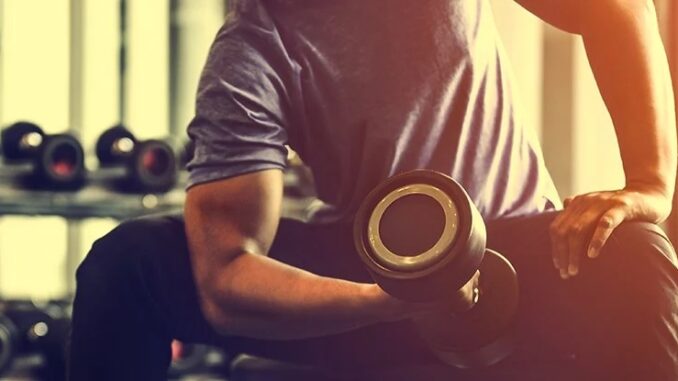Unveiling the Magic of Clash Royale: A Fresh Take on Mobile Gaming!
How to Download and Install Wyze App for Free?
Playrix downloads exceed 1 billion
From Dawn to Dusk, Befriend, Greet and Defeat Legions of Merry Zombies.
The more generous the society is, the longer its members live
Supercell‘s sixth mobile game "Rush Wars" is now in beta
It's time to go to the gym to do some weight training of the arms today. Unfortunately, the brutal weekend makes your left arm not moving for some time. Not to worry—new research shows that doing some bicep curling training with your right arm can benefit both of your arms.

A new study conducted by researchers from Chilean, French and Australian institutes found that if you do one-sided arm resistance training for one month, especially eccentric training, the other arm with less activity will maintain more muscle mass and even increase strength.
Any bodybuilding sportsman will say that when you lift dumbbells, your muscles work through teamwork to complete the action, support and fix various bones. Thus, don’t be surprised, parts of the body that are not obviously involved in one action may actually be involved.
When it comes to contralateral limbs like our arms, few studies specifically test this assumption. Neither of the two studies that tested significant effects discerned whether the type of training had an effect.
However, the specific types of weight training are not trivial.
Lift the dumbbells and bend your elbows to bring the dumbbells closer to your shoulders – this action is done through the concentric contraction of the biceps, the muscle fibers contract and the entire biceps muscle becomes shorter.
Conversely, stretching the arm is through eccentric contraction. The biceps will still exert force, but the whole muscle will become longer.

Both training methods can improve muscle strength and physical fitness. If you want to increase strength, it seems you should focus on eccentric contraction.
In order to study whether the eccentric contraction exercise is more suitable for the immovable arm, the researchers invited 18 men and 12 women, ages between 18 - 34, and asked them to live with one arm sling for 8 hours a day (including driving, bathing and sleeping). This study lasted one month.
10 people in this group do nothing, living like a man with a broken arm. The remaining 20 people were divided into two groups, 10 people practiced three times a week, and the training was a mixture of centripetal and centripetal. And the other 10 people only do eccentric training.
At the end of the month, different standard studies were conducted on the biceps that the entire group of people did not move, including girth, strength and neural input.
"Participants undergoing eccentric training have the greatest increase in the muscle strength of their arms, so this training method has a very powerful cross-migration effect." said Ken Kazunori Nosaka, one of the researchers.
"This group of people lost only 2% of their muscle mass on the arm, while the group who did not exercise lost up 28%. This means that the group who have not exercised must regain those muscles and strength. " But it is still not entirely clear how these exercises help static limbs avoid muscle atrophy. One possibility is through complex muscle contractions in one arm, the brain also sends signals to the other arm to keep muscles vigorous.
It is also possible that the entire support network for muscle contraction is spread throughout the body, and it is unnoticeable but it does have influence on the inactive biceps of the other arm.
Another question is whether the same effect will also appear on other symmetrical parts of the body, such as two legs.
For those who are recovering from injuries or suffered from a stroke before, it can be a good start for recovery exercise, as long as the risk and benefit of specific training at any time can be balanced up.
Nosaka said: “By starting rehabilitation and training on the uninjured limb, we can prevent the muscle damage caused by the training of the injured limb, at the same time we can also strengthen the strength of this limb. "